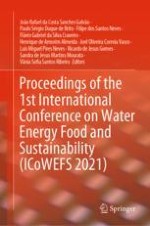2021 | OriginalPaper | Chapter
Cultivation of Gracilaria gracilis in an Aquaculture System at Mondego River (Portugal) Estuary Adjacent Terrain
Authors : Ana Carolina Inácio, Tiago Morais, João Cotas, Leonel Pereira, Kiril Bahcevandziev
Published in: Proceedings of the 1st International Conference on Water Energy Food and Sustainability (ICoWEFS 2021)
Publisher: Springer International Publishing
Activate our intelligent search to find suitable subject content or patents.
Select sections of text to find matching patents with Artificial Intelligence. powered by
Select sections of text to find additional relevant content using AI-assisted search. powered by
